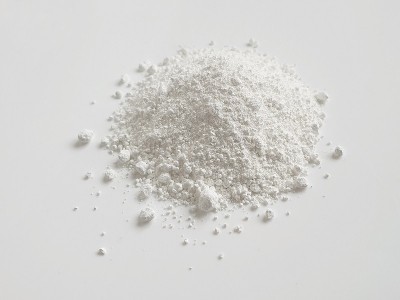Nanomaterials: Food agency identifies main uses, reveals ‘most affected’ food categories

Nanomaterials have been progressively integrated into food products since the late 1990s. Manufactured nanomaterials provide specific properties at the nanoscale – whether it be as an additive, a nutrient, or in packaging.
However, the wide-scale use of manufactured nanomaterials – both in food and non-food products – has raised a number of questions and concerns, particularly surrounding their impact on human health and the environment, as well as how best to regulate them.
In France, the Government has sought to better understand the main uses of manufactured nanomaterials in foods to regulate the sector accordingly.
Identifying the main uses of nanomaterials
The National Agency for Food, Environmental and Occupational Health Safety (ANSES) was directed to investigate nanomaterial usage in the food sector by France’s Directorate General for Food (DGAL), the Directorate General for Health (DGS), the Directorate General for Work (DGT), the Directorate General for Risk Prevention (DGPR) and the Directorate General for Competition, Consumption and Fraud Prevention (DGCCRF).
What is manufactured nanomaterial?
ANSES defines the term ‘manufactured nanomaterial’ to mean an organic, inorganic or composite material produced by humans for application purposed and composed in whole or in part of constituent particles having at least one dimension between 1 and 100 nanoscale (nm).
The food agency identified three primary uses:
- As an additive, to improve the appearance and palatability of the food product (by modifying the structure, colour, texture). Examples include additives E 341iii (tricalcium phosphates) or E551 (amorphous silica);
- As materials in contact with food, for their functions of improving the security of packaging, for example, anti-microbial function provided by nanosilver;
- And in nutritive ingredients, which may be in a nanoparticle state. An example could include calcium carbonate used in infants’ milk to attain enough calcium.
Case study: titanium dioxide
Titanium dioxide nanomaterial, for example, is predominantly used as a colouring. It has arguably attracted more regulatory attention than most, in light of health and safety concerns surrounding its ingestion.
In the European food sector, titanium dioxide is known as E 171. A colouring with no nutritional value, E 171 is predominantly used in sweets, chewing gum, bakery, and sauces, to give a white, opaque, or cloudy affect. It is also used in sun cream because it reflects UV light.
However, the UN’s International Agency for Research on Cancer (IARC) has classified titanium dioxide as a possible human carcinogen.
Following an investigation by ANSES, last year the French food agency ruled that there was not enough evidence to guarantee the safety of titanium.
“ANSES stresses in its opinion that the evaluation of the risks related to the use of this additive still suffers from a lack of data that the marketers and producers of this additive should have provided,” noted representatives from France’s ministries of economy and environment at the time.
As a result, France suspended use of the additive for one calendar year, starting 1 January 2020.
Nanomaterials in ‘a majority’ of food categories
Pooling data from scientific literature, ANSES identified seven substances – used as either food additives or ingredients – for which it considers that the presence of nanoparticles is proven.
These include titanium dioxide, calcium carbonate, iron oxides and hydroxides, calcium silicate, tricalcium phosphates, synthetic amorphous silicas, and organic and composite compounds.
The food agency did the same for those additive or ingredients suspected to contain nanoparticles – of which it counted 30. These include aluminium, silver, gold, magnesium, phosphates, ferric ammonium citrate, sodium, potassium, and calcium salts of fatty acids.
ANSES then compared these substances with national food databases The Food Observatory (Oqali) and Mintel’s Global New Products Database (GNPD).
Alarmingly, close to 900 food products from these databases were found to contain at least one additive or ingredient that falls into the ‘presence of nanoparticles is proven’ category.
ANSES stressed that the survey was carried out before its suspension of E 171.
The ‘most affected’ food sub-categories were found to be infant milk (25.6%), confectionery (15.6%), breakfast cereals (14.8%), cereal bars (12.9%), and frozen pastries and desserts (10.9%).
Next steps
Before the food agency submits its appraisal on the use of nanomaterials in food, it will study the health risks that these substances could represent for consumers.
In the meantime, ANSES is urging consumers to “limit exposure by avoiding unnecessary use of nanomaterials in food and by promoting safe products, devoid of nanomaterials, and equivalent in terms of function and effectiveness”.


























